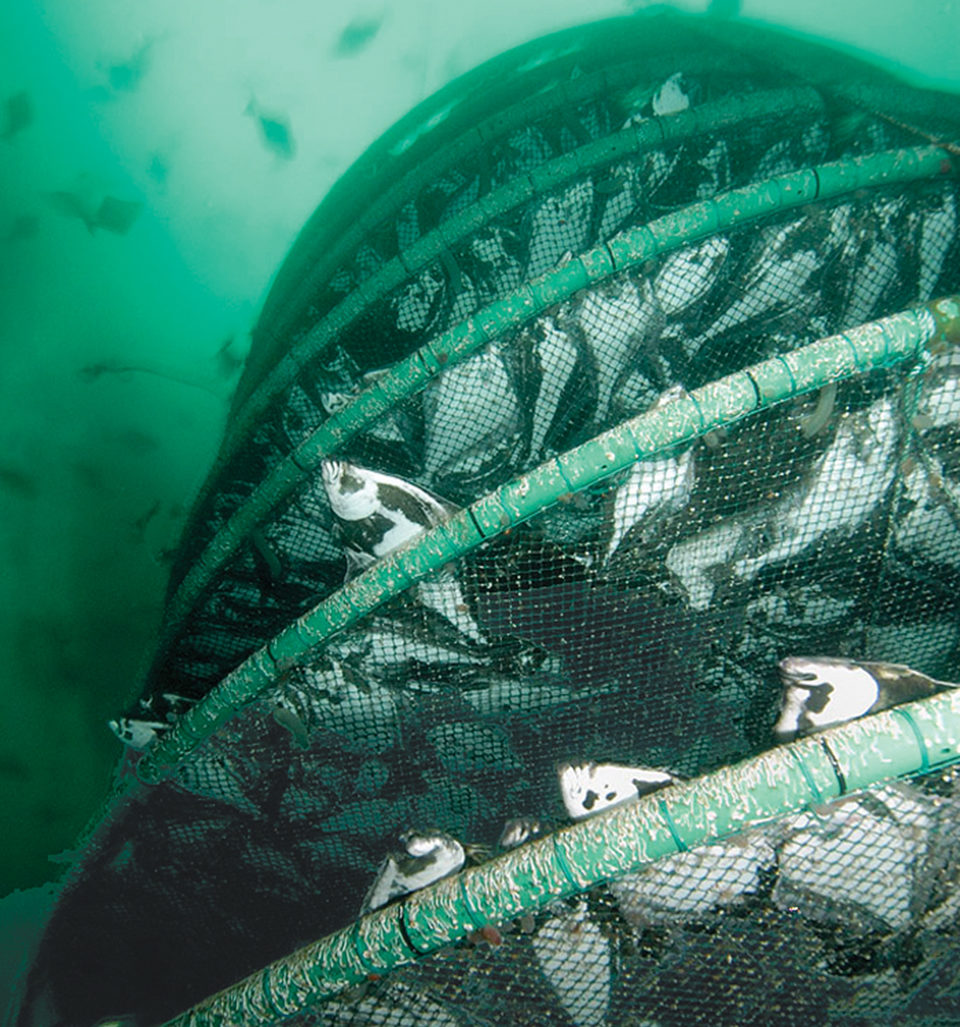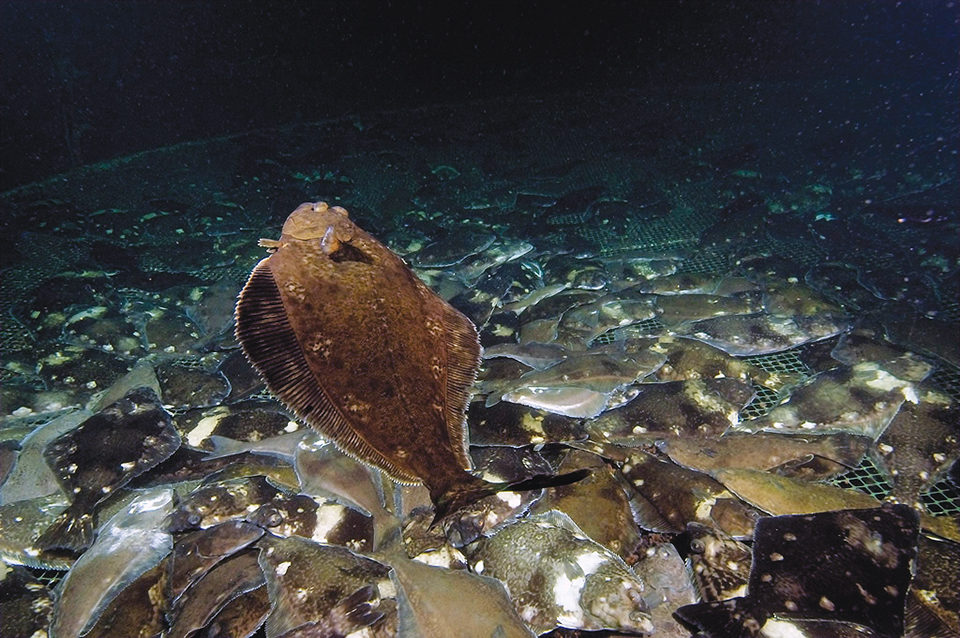‘Royal choice’ requires long grow-out period

When Her Majesty Queen of Norway celebrated her 70th birthday this summer, the royal guests were served farmed white halibut as the main course at the celebrations. Only 30 years ago, the product did not even exist.
Serving halibut at royal festivities is nothing new, as wild Atlantic halibut have traditionally been featured at special occasions for thousands of years and recognized as a royal delicacy for over 500 years. When Archbishop Olav Engelbrektson wanted to honor Queen Christina in Copenhagen in 1523, he sent her what was then seen as one of the finest products available: dried fat from the halibut’s side fin, or “kveiterav.”
Myriad myths and legends reflect the status coastal inhabitants attributed to halibut. The fish have been identified in rock carvings found in Stone Age settlements dating back more than 10,000 years. The fact that farmed white halibut reached the status of delicacy only 30 years after its aquaculture began is quite remarkable, and illustrates the rapid and efficient development of this industry.
Halibut aquaculture
The white halibut (Hippoglossus hippoglossus), also called Atlantic halibut, is the largest flatfish species. During its production cycle, white halibut undergo an 18-month hatchery and nursery stage. Broodstock kept in large tanks spawn naturally three to four times a year, providing fertilized eggs that are placed in dark tanks.
After 13 to 20 days in darkness, the eggs hatch and small fry appear, each with its yolk sac of nourishment to feed on in the coming days. When their yolk sacs are depleted, the halibut begin to eat live feed such as small crustaceans or small single-cell plant plankton. During metamorphosis, the fish become flatter and move to the bottom. Dry feed can be provided when the metamorphosis is finished.
The halibut are then moved to a land-based nursery tank, where they grow to become 350- to 400-g juveniles. This is the beginning of a long process in which the halibut move through production facilities designed for optimal health and growth.
The grow-out stage to commercial size lasts three years. After the nursery stage, juveniles are moved to an open, land-based facility and grown to about 1.5-2 kg. They are then ready to move to a sea-based facility with innovative suspended housing systems. At these sea locations, the halibut are held for about two years, until they are ready for harvest at sizes up to 10 kg.
Industry development
Norway started traditional salmon farming in the 1960s, and farming of halibut began around 20 years later. Despite the industry’s extensive experience with salmon farming, halibut farming soon became quite a different project.
Marine Harvest Group was one of the halibut pioneers, establishing its first halibut-farming site in Scotland in 1994. The first site on the west coast of Norway was established in 2000. Trond Sandvik, Marine Harvest production manager for Sterling White Halibut, has been involved since day one. Today he manages five sites, which produced 1,300 metric tons (MT) of halibut in 2006. According to Sandvik, farming halibut is more demanding than traditional salmon farming for several reasons.
Unlike the constantly swimming salmon, halibut are bottom-dwelling fish that need space on which to lie. A housing system like a block of flats was developed to provide sufficient spaces in an economic manner. These suspended structures provide multiple “floor” layers on which the halibut can rest. They emerge to eat, then return to their “flats.”
The ongrowing stage takes place in open-sea pens in carefully selected fjord locations. The flat system is expanded with the size of the fish to provide plenty of space for movement and places to rest.

Hatcheries, environmental conditions
Since the mid-1990s, halibut hatcheries have achieved acceptable survival rates, so the young fish are available to farmers at economic prices. These rates continue to improve with, for example, new advances in special feeds.
The natural conditions for halibut farming are very important. The Norwegian fjords, for example, provide an optimal growing environment and help produce farmed white halibut of consistently high quality and higher average yield than their wild cousins.
On the west coast of Norway, deep fjords provide a constant stream of cold, clear seawater. Individual farm sites are carefully selected to combine good tidal conditions with protection from harsh winter storms. The result is a reliable and increasing supply of tasty fish that provide an excellent source of protein, vitamins, and omega-3 fatty acids.
Markets

White halibut products include whole fish, steaks, cutlets, loins, and fillets. The main markets are special wholesalers, and large stores and supermarkets in Norway, Great Britain, Sweden and the United States.
Official figures show a steady increase in Norway’s exports of farmed white halibut. According to the Norwegian Seafood Export Council, the export volume increased more than 35 percent from 2005 to 2006. The average price for halibut went up 14 percent in the same period. The country’s biggest market is Great Britain, with 360 MT in 2006. The U.S. is the second-largest market, increasing its imports of Norwegian white halibut from 145 MT in 2005 to 192 MT in 2006.
The demand for farmed white halibut has been strong during the first half of 2007. Volume increased 40 percent and prices increased 15 percent over the levels seen in the same period in 2006.
(Editor’s Note: This article was originally published in the September/October 2007 print edition of the Global Aquaculture Advocate.)
Now that you've finished reading the article ...
… we hope you’ll consider supporting our mission to document the evolution of the global aquaculture industry and share our vast network of contributors’ expansive knowledge every week.
By becoming a Global Seafood Alliance member, you’re ensuring that all of the pre-competitive work we do through member benefits, resources and events can continue. Individual membership costs just $50 a year. GSA individual and corporate members receive complimentary access to a series of GOAL virtual events beginning in April. Join now.
Not a GSA member? Join us.
Author
-
Marit Husa
Communication Manager
Marine Harvest Group
Stortingsgata 8, 0161 Oslo
P.O. Box 1086 Sentrum
0104 Oslo, Norway
Tagged With
Related Posts

Health & Welfare
LED lighting technology provides unique benefits for aquaculture
Environmental lighting, which synchronizes all stages of aquatic life, is an important consideration as more aquatic animals are produced indoors in highly controlled environments. Artificial lighting should deliver uniform light across the water’s surface in rearing tanks and mimic not only photoperiod, but also light color and intensity.

Innovation & Investment
Norway showcases halibut farm as sustainability star
Recognizing its potential as a sustainable fish producer, Norway highlights land-based halibut farmer Sogn Aqua in the debute of The Explorer digital showroom. The Advocate recently paid a visit to the farm in Ortnevik.

Innovation & Investment
Aquaculture in Canada: status, perspectives
Canada exports farmed seafood products to more than 22 countries and is the main seafood supplier to the U.S. market. Finfish, primarily salmon, production is strong and shellfish production is growing, but diversification will be imperative to maintain competitiveness.

Health & Welfare
Flatfish conditioning for stock enhancement
Acclimation cages, the most implemented conditioning strategy for flatfish, are inexpensive and effective, but require site-specific adjustment. Live or lifelike diets show great potential in rearing stocked flatfish.


